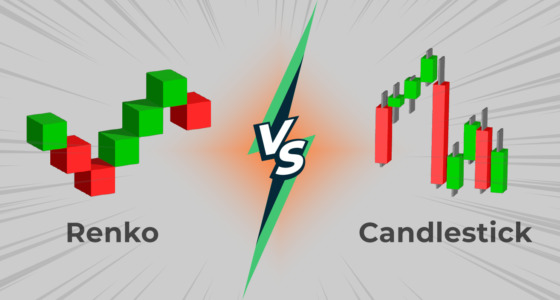

Technical and fundamental analysis are essential tools for traders to analyze stocks and make trading decisions. However, beginners in the stock market often struggle to understand the differences between these two approaches. This article aims to clarify the distinction between technical and fundamental analysis.
What is fundamental analysis?
Fundamental analysis involves evaluating stocks to determine their intrinsic value. It considers various factors, such as industry conditions and individual company management. Fundamental analysts examine a company’s returns, assets, expenditures, and liabilities to predict its market price.
What is technical analysis?
In contrast to fundamental analysis, technical analysis focuses on statistical trends like price and volume movements. Technical analysts assume that all relevant fundamental factors are already reflected in a stock’s price, eliminating the need to analyze them separately. Instead, they use charts to identify trends and patterns, which helps forecast future price behavior.
What sets technical analysis apart from fundamental analysis?
Technical and fundamental analysis are two different approaches to evaluating investments and making trading decisions. Both methods are used to develop investment strategies.
Fundamental analysis estimates a company’s stock value by assessing its financial statements and business prospects. On the other hand, technical analysis studies market behavior and predicts how stock prices will respond to it. While both approaches have their advantages and disadvantages, technical analysis is more widely used by traders as it applies to a broader range of markets. Fundamental analysis requires more time and effort, but it can be more accurate in the long run.
Now that we have explained the terms, let’s explore the differences between fundamental analysis and technical analysis and determine which one traders should choose for trading in platforms like Forex.
- Focus
Fundamental analysis focuses on a company’s fundamental principles, such as its financial health, management team, and competitive advantage. Technical analysis, on the other hand, concentrates on market data, including price charts and volume indicators.
- Target
Fundamental analysis aims to determine a security’s intrinsic value based on its underlying fundamentals. Technical analysis predicts future price movements based on past market data.
- Time frame
Fundamental analysts typically have a long-term outlook, while technical analysts focus on short-term trends.
- Analysis
Fundamental analysis is objective, while technical analysis is subjective because it involves interpreting chart patterns.
Which approach is better?
The choice between fundamental analysis and technical analysis depends on your goals and time frame. If you are looking to make long-term investments in undervalued stocks with potential capital gains, fundamental analysis is the way to go. On the other hand, if you aim to generate quick profits through intraday or swing trading, technical analysis is more suitable.
Ultimately, your goals and objectives determine the preferred approach. If you believe the market is efficient and prices already reflect all necessary information, technical analysis can help inform your decisions. If you prefer to analyze a company’s fundamentals and invest for the long term, fundamental analysis is the better choice.

Difference between fundamental and technical analysis in the tabular form
Here are the main differences between fundamental analysis and technical analysis presented in a tabular format:
| Basis of comparison | Technical analysis | Fundamental analysis |
| Definition | Technical analysis is used to understand patterns in the company’s stock price. It focuses on data relating to the price and volume of a stock. | Fundamental analysis helps identify and understand the company’s financial performance. It is used to examine the basics of a company. |
| Data source | Chart analysis | News items, economic reports, industry statistics, brokerage analysis, etc. |
| Time frame | Suitable for short-term investments. | Suitable for long-term investments. |
| Data | Focuses only on previous data. | Focuses on previous and current data. |
| Goal | Determine the perfect time to invest or withdraw funds from the market. | Determine the intrinsic value of a particular stock. |
| Trader Types | Traders take on longer-term positions. | Swing traders and day traders trade briefly. |
| Indicators | Studies expenses, revenues, assets, debt-equity ratio, liabilities, return on equity ratio, etc. | Uses charts with EMA, RSI, MACD, SMA, and other technical indicators. |
| Impact of external news | Does not depend on external news. | It can be affected by external news. |
The bottom line
Traders utilize both fundamental and technical analysis to research and predict future stock price trends. However, there is a significant distinction between the two. Fundamental analysis evaluates a company’s stock to determine its intrinsic value, while technical analysis examines patterns and trends in price and volume. Some traders prefer one method over the other, while others use a combination of both. Ultimately, the choice of method depends on your personal preferences and goals.








